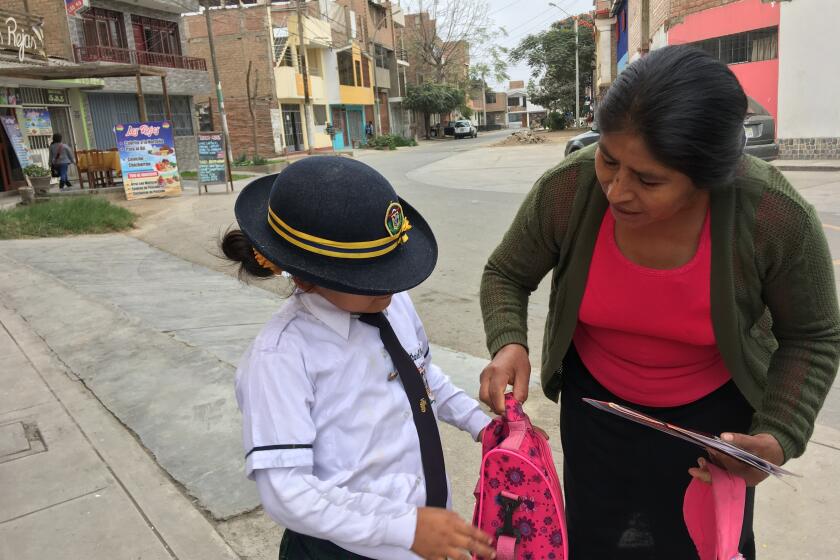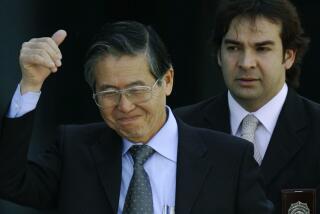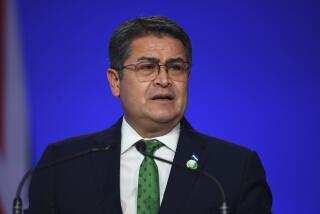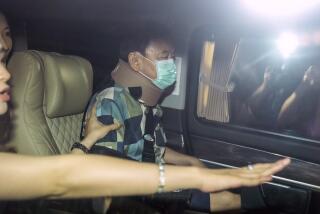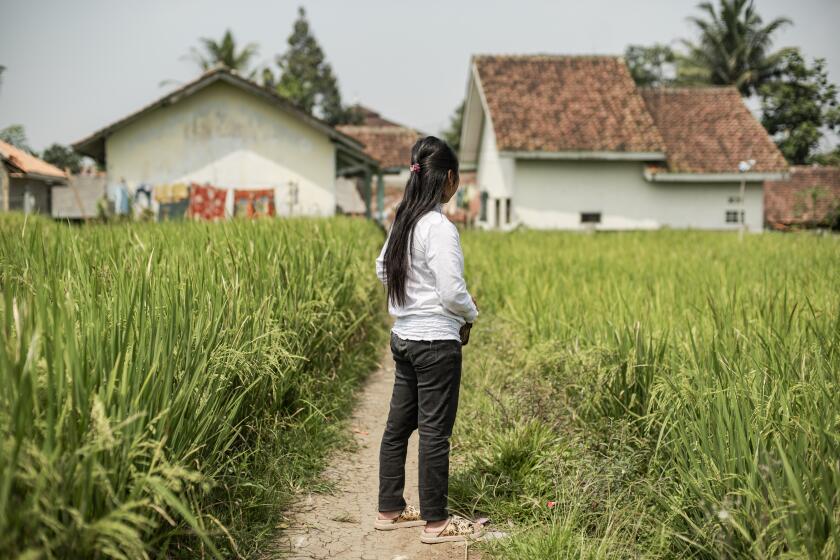Peruvian court OKs prison release for ex-President Fujimori
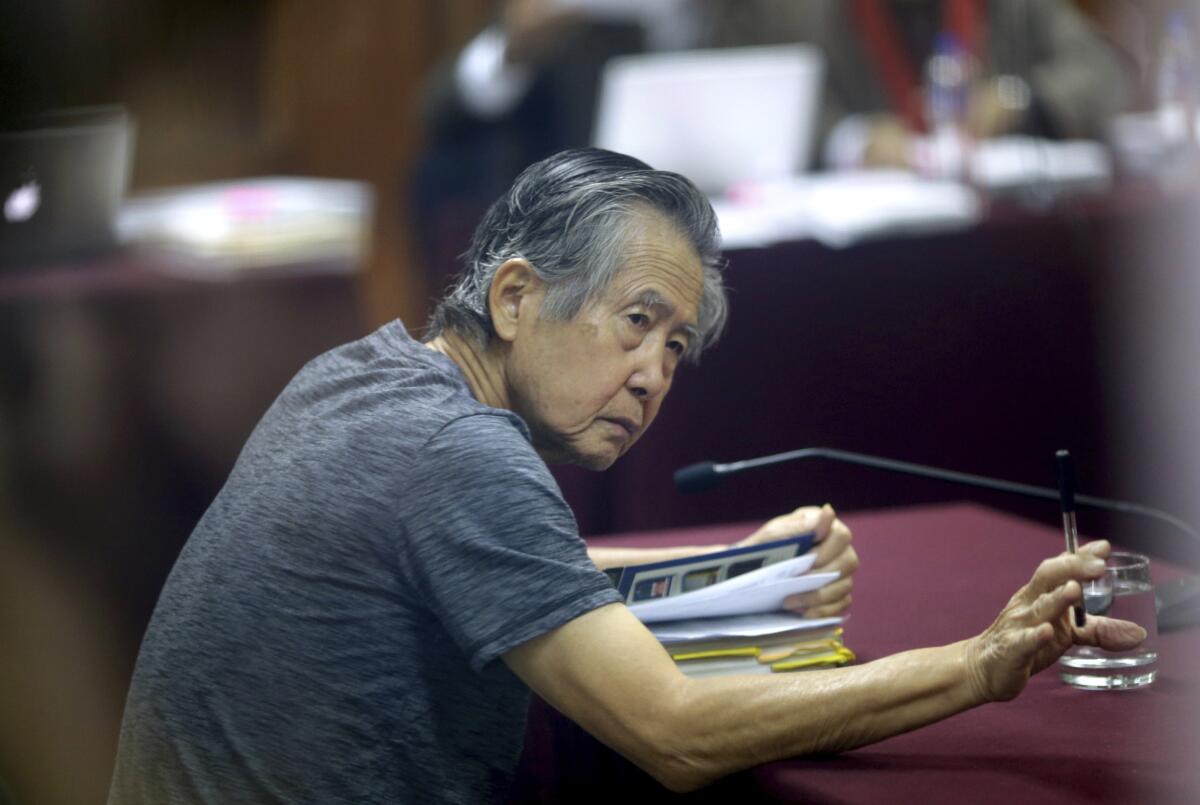
LIMA, Peru — Peru’s Constitutional Court on Thursday approved the release from prison of former President Alberto Fujimori, who is serving a 25-year sentence for murder and corruption.
The decision restored a humanitarian pardon granted to Fujimori on Christmas Eve 2017 by then-President Pablo Kuczynski, a court official told the Associated Press. The official was not authorized to speak on the matter and therefore required anonymity.
The country’s Supreme Court overturned the medical pardon in 2018 and ordered the former autocrat returned to jail to serve out his sentence for human rights abuses, which was supposed to run until Feb. 10, 2032.
Kuczynski had said he pardoned Fujimori because he suffered a heart condition made worse by prison conditions, though the move was widely seen as an attempt to stave off impeachment by courting favor with Fujimori’s allies in Congress. Kuczynski resigned three months after the pardon.
People gathered outside the prison hoping to see the 83-year-old Fujimori exit, though authorities gave no indication his release was imminent. Fujimori’s lawyer, Cesar Nakazaki, said the former leader was not expected to leave prison until Monday or Tuesday after some legal procedures were completed.
President Pedro Castillo tweeted Thursday that “the international justice bodies to which Peru is attached must safeguard the effective exercise of justice for the people.”
Prime Minister Aníbal Torres said the ruling “harms” the country but would be followed. Torres told a local radio station that the court was being “a champion of impunity for major criminals.”
The Constitutional Court typically livestreams its decisions but did not do so in this case. It also did not give an explanation for its ruling.
Fujimori, who governed from 1990 to 2000, remains a polarizing figure in the Andean country. Some Peruvians laud him for defeating the Maoist Shining Path guerrilla movement, while others loathe him for human rights violations carried out under his government.
A former mathematics professor, Fujimori was a political outsider when he emerged from obscurity to win Peru’s 1990 presidential election over writer Mario Vargas Llosa.
Peru was being ravaged by runaway inflation and guerrilla violence when he took office. He quickly rebuilt the economy with mass privatization of state industries. Defeating the Shining Path rebels took longer, but his fight won him broad-based support.
But his presidency collapsed just as dramatically as his rise to power.
Ex-President of Peru Alberto Fujimori and three of his health ministers are facing prosecution for a program in which women were allegedly sterilized without consent.
After briefly shutting down Congress and putting himself into a third term, Fujimori fled the country in disgrace in 2000 after leaked videotapes showed his spy chief, Vladimiro Montesinos, bribing lawmakers. Fujimori went to Japan, his parents’ homeland, and sent in his resignation by fax.
Five years later, he stunned supporters and enemies alike when he flew to neighboring Chile, where he was arrested and extradited to Peru. Fujimori’s goal was to run for Peru’s presidency again in 2006, but instead he was put on trial.
His daughter, Keiko Fujimori, was a presidential candidate last year and vowed to release him if she got elected. But Castillo defeated her in a runoff election.
All former Peruvian presidents since 1985 have been ensnared in corruption allegations, some imprisoned or arrested in their mansions. One died by suicide before police could take him into custody. The South American country cycled through three presidents in November 2020.
Fujimori also faced charges stemming from his role in a 1990s government program in which many Indigenous women in poor communities said they were forcibly sterilized and for the murder of six farmers by a military death squad during his administration.
More to Read
Sign up for Essential California
The most important California stories and recommendations in your inbox every morning.
You may occasionally receive promotional content from the Los Angeles Times.
